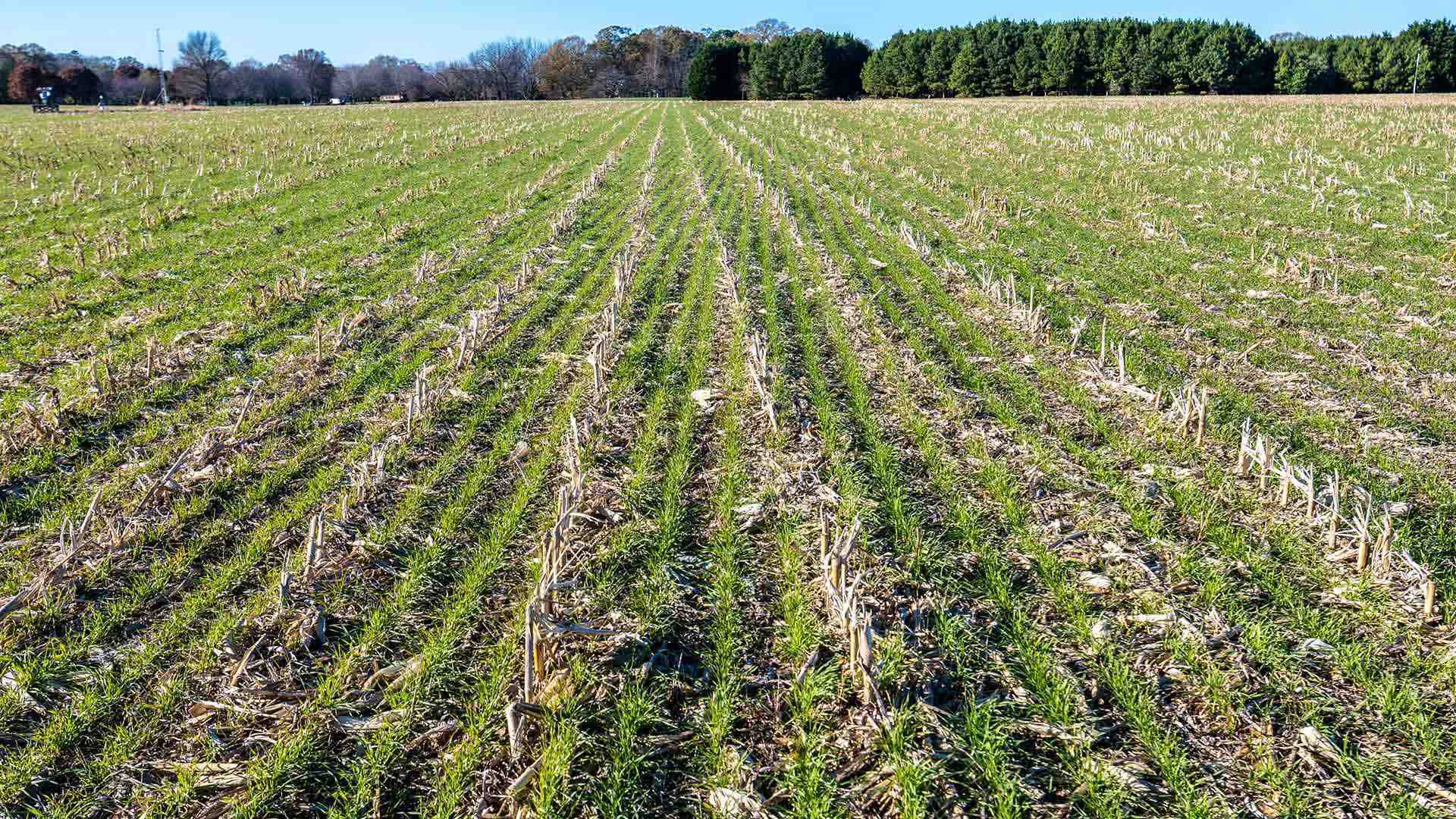- May 02, 2023
- By Kimbra Cutlip
A $1.2 million grant from the U.S. Department of Agriculture's Natural Resources Conservation Service will support a University of Maryland researcher’s work to help farmers across the United States make informed decisions about fertilizer use and reduce greenhouse gas emissions.
Brian Needelman, a professor in the Department of Environmental Science and Technology, and his colleagues are developing a web-based tool to solve the problem of nitrogen from excess fertilizer in farm fields that can pollute waterways while contributing to climate change. When bacteria digest nitrogen, the process releases nitrous oxide, third most-common greenhouse gas.
To combat this issue, farmers often plant cover crops in the off season to help absorb some of the excess nitrogen, which is released back into the ground in the spring when farmers kill off the cover crop and plant their cash crop. This reduces the amount of commercial fertilizer farmers need to apply.
However, determining how much nitrogen a cover crop takes up and how much nitrous oxide is emitted can be difficult due to various factors such as climate, weather and soil conditions.
Needelman and his colleagues aim to address this challenge by integrating satellite imagery of farm fields with location-specific data on soil composition, rainfall, temperature and other climate factors to more precisely predict the real-time conditions of cover crops on fields and calculate the nitrogen available for cash crops during planting. The tool, called the Cover Crop Nitrogen Calculator, will provide farmers with real-time, site-specific information about the performance of cover crops and estimates of greenhouse gas emissions.
The project also aims to pilot an approach that involves installing video cameras on farmers’ tractors to capture the growth of cover crops at a very high resolution, which can be fed into the computer models and provide precise recommendations for nitrogen application in individual crop rows.
Over the course of the three-year project, Needelman and colleagues will test the tool with farmers across the country. The improved web-based nitrogen decision management tool will be presented to the USDA by the end of the project for use by farmers across most of the U.S.
"We're excited to work with farmers across the country to develop a tool that can help them make better decisions about their use of fertilizer and their impact on the environment," Needelman said. "This project has the potential to significantly reduce the environmental impact of farming while improving the efficiency and productivity of the industry."
